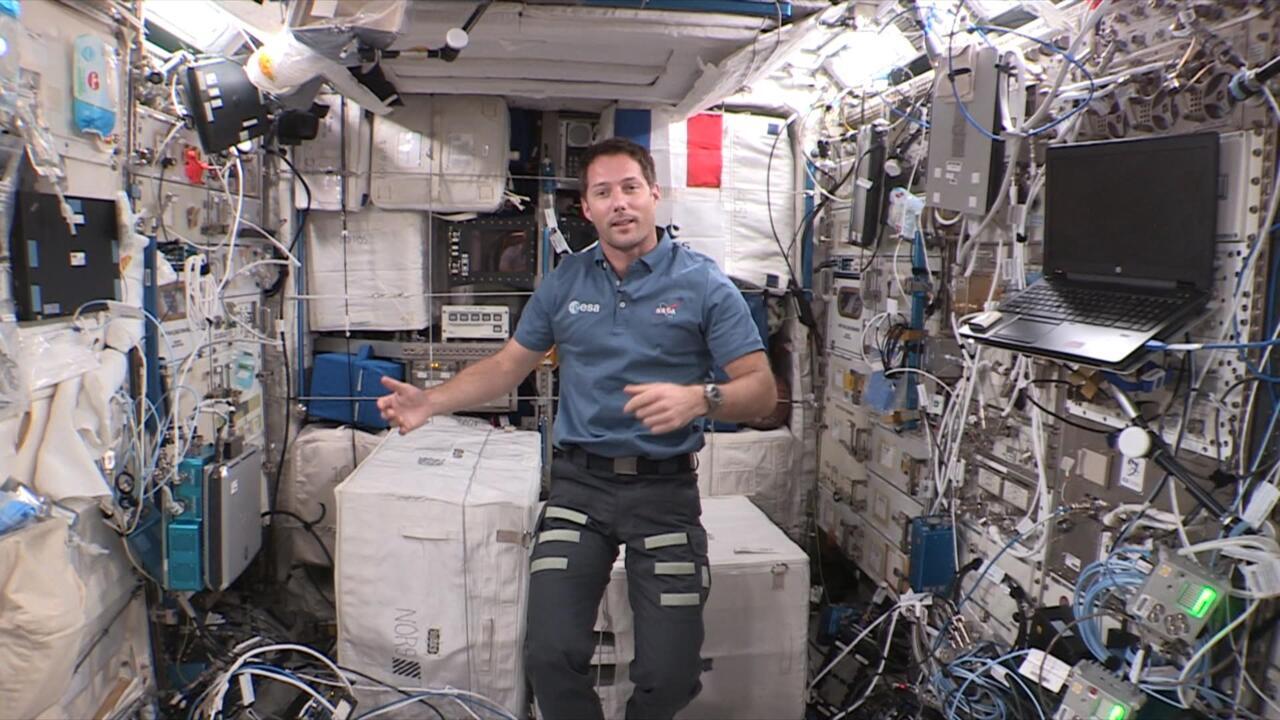The operation promises to be perilous.
For the third time in his life, Thomas Pesquet is preparing with the American Shane Kimbrough to leap into the void of space.
From 12:00 GMT and for more than six hours, the two astronauts will float in zero gravity, 400 kilometers above the Earth, clinging to the International Space Station, to install a new solar panel.
They will restart the operation on Sunday to deploy a second, and thus increase the power of the vessel built in 1998.
This extravehicular activity ("EVA"), the first since their arrival in the ISS at the end of April, is technically unprecedented.
It promises to be "rather complex," said Pooja Jesrani, head of orbital exits at NASA, Monday during a press briefing.
"There is apprehension, it is years of work for hundreds of people, we do not want to make a mistake and break equipment that cost a million dollars," said Thomas Pesquet in his journal board on France Inter.
👨🚀 Program of the day for @astro_kimbrough and me: we go out into the void, I will be transported by a robotic arm holding solar panels 3m long, we will plug them in ⚡ and return to the @space_station 6h30 later .
See you tonight 👋
⏯ https://t.co/F9tPIBmyVN pic.twitter.com/3G5Cn4U3o2
- Thomas Pesquet (@Thom_astro) June 16, 2021
The astronaut knows the terrain, surveyed twice during his previous mission in 2017, with the same teammate.
This time, the roles are reversed: he will be "EVA 1", Shane Kimbrough "EVA 2".
"No.1 is the big boss. Now I'm not the little kid anymore," the 43-year-old astronaut commented.
"I can't wait for Thomas to be in this role and to be a good support," tweeted his 54-year-old colleague.
"Running a 100 meters for the duration of a marathon"
The mechanics will divide up the tasks during the operation, meticulously choreographed by NASA.
Objective: to deploy the solar panels on the port side of the ISS, at the end of the mastodon as large as a football field.
The "new generation" panels, delivered by freighter in compact form, have already been attached to the exterior of the vessel.
Thomas Pesquet will retrieve the 350-kilogram object, then, moved by a robotic arm, will walk alongside the Station to pass it on to his sidekick.
The solar panels 🛰️ that we are going to install and deploy tomorrow!
For the moment they are rolled up on themselves.
The teams are ready and Shane and I too ... we are all very impatient!
#MissionAlpha pic.twitter.com/DEwJs0rXX1
- Thomas Pesquet (@Thom_astro) June 15, 2021
Hanging on the arm by the feet, they will unfold the panel and its 19 meters long.
The day will be trying.
"An EVA is like running a 100 meters over the duration of a marathon," Hervé Stevenin, in charge of training for these exits for the European Space Agency (ESA), told AFP.
Loss of tightness
"Working in a diving suit is extremely difficult. All the senses are limited, you lack dexterity with the gloves: holding a tool is like squeezing a tennis ball, hundreds of times for six hours," describes the instructor.
Despite a limited field of vision, astronauts must have a permanent "awareness of their surroundings that goes beyond everyday life".
Not to mention the discomfort: with the preparation time, they stay stuck for ten hours in their diving suit, like in a "tin can", with only a small pocket of water to drink.
The view from @ astro_kimbrough's bedroom (he sleeps in our Dragon 🐉).
It's always a little dizzying to think that tomorrow we'll both be on the other side of the window… 👨🚀👨🚀🛰️ #MissionAlpha # Crew2 pic.twitter.com/gMU5sn9jCA
- Thomas Pesquet (@Thom_astro) June 15, 2021
No danger of them falling into the void, since a "triple security", including a cable connecting them permanently to the Station, prevents the nightmarish scenario of the film "Gravity" from happening in real life, reassures the expert.
On the other hand, troublesome or even dangerous incidents can occur, such as the loss of tightness of the diving suit in the event of a micrometeorite impact.
The cooling system can also flow into the ventilation system, as the Italian Luca Parmitano experienced in 2013.
See this post on Instagram
A post shared by Thomas Pesquet (@thom_astro)
"A dream within a dream"
"A water bubble stuck behind his head, he could no longer hear and had to cut short his exit. He could have drowned," says Hervé Stevenin.
"You don't have the impression of constantly risking your life", testifies Thomas Pesquet, for whom "EVAs" represent a "dream within a dream".
Although he was "not very proud" the first time he let go of his fingers from the ship.
"The rest is fine, we feel like we're fixed, rock climbing with a big ball spinning under our feet. On my first ride, Shane told me 'look around' because 'we hadn't lifted our nose off the handlebars. Now I'm going to try to do it ".
With AFP
The summary of the week
France 24 invites you to come back to the news that marked the week
I subscribe
Take international news everywhere with you!
Download the France 24 application
google-play-badge_FR

